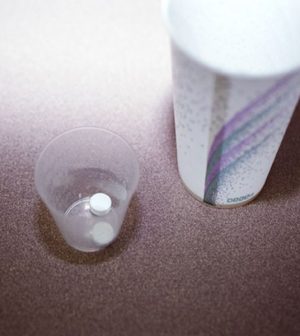- Navigating Your Midlife Crisis: Embracing New Possibilities
- City Raccoons Showing Signs of Domestication
- Mapping the Exposome: Science Broadens Focus to Environmental Disease Triggers
- One Week Less on Social Media Linked to Better Mental Health
- Your Brain Changes in Stages as You Age, Study Finds
- Some Suicide Victims Show No Typical Warning Signs, Study Finds
- ByHeart Formula Faces Lawsuits After Babies Sickened With Botulism
- Switch to Vegan Diet Could Cut Your Greenhouse Gas Emissions in Half
- Regular Bedtime Does Wonders for Blood Pressure
- Dining Alone Could Mean Worse Nutrition for Seniors
U.S. Hospitals Still Prescribe Too Many Antibiotics: Study

About 20 percent of U.S. hospital patients who receive antibiotics experience side effects from the drugs, researchers report.
The new study included nearly 1,500 hospitalized adults who were prescribed antibiotics. The findings revealed that one-fifth of those who experienced antibiotic-related side effects didn’t require the drugs in the first place.
The results add to growing evidence that antibiotics are overused, according to the Johns Hopkins Hospital researchers.
“Too often, clinicians prescribe antibiotics even if they have a low suspicion for a bacterial infection, thinking that even if antibiotics may not be necessary, they are probably not harmful. But that is not always the case,” said Dr. Pranita Tamma. She is director of the hospital’s Pediatric Antimicrobial Stewardship Program.
Antibiotics can cause real harm and doctors should always consider if they are necessary, Tamma said.
“If the patient develops an antibiotic-associated adverse reaction, even though that is, of course, unfortunate, we should be able to take some comfort in knowing that at least the antibiotic was truly necessary,” Tamma said in a Johns Hopkins news release.
Tamma is also an assistant professor of pediatrics at Johns Hopkins School of Medicine in Baltimore.
Patients in the study were hospitalized for reasons ranging from trauma to chronic disease. All received at least 24 hours of antibiotic treatment.
Overall, 20 percent had one or more antibiotic-related side effects within a month of leaving the hospital. The most common were digestive upsets (42 percent), kidney problems (24 percent), and blood problems (15 percent), the findings showed.
For every additional 10 days of antibiotic treatment, the risk of side effects rose by 3 percent, the investigators found.
Over 90 days, 4 percent of study patients developed a bacterial diarrhea called Clostridium difficile, which can be severe. In addition, 6 percent developed infections that were potentially drug-resistant.
The study was published June 12 in the journal JAMA Internal Medicine.
More information
The U.S. Centers for Disease Control and Prevention has more on antibiotics.
Source: HealthDay
Copyright © 2025 HealthDay. All rights reserved.










